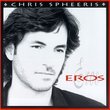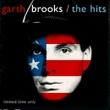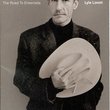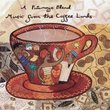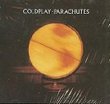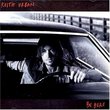| All Artists: Paco De Lucia Title: Duende Flamenco Members Wishing: 4 Total Copies: 0 Label: Polygram Int'l Original Release Date: 6/21/1994 Re-Release Date: 5/25/1992 Genres: International Music, Jazz, Latin Music Styles: Europe, Continental Europe, Latin Music, Flamenco, Jazz Fusion, Latin Jazz Number of Discs: 1 SwapaCD Credits: 1 UPCs: 042282441720, 0042282441720, 042282441744, 738476394025 |
Search - Paco De Lucia :: Duende Flamenco
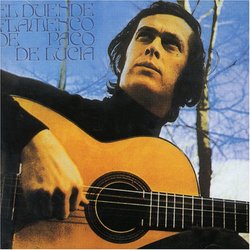 | Paco De Lucia Duende Flamenco Genres: International Music, Jazz, Latin Music
|
Larger Image |
CD DetailsSimilarly Requested CDs
|
CD ReviewsAn essential and ground-breaking recording L. K. Coleman | New Orleans, LA USA | 12/03/1999 (5 out of 5 stars) "This is what I call Paco's "break away" album. Paco was already recognized as the most technically accomplished Flamenco guitarist ever, the "rising star" of Flamenco, before this album's release. However, until "El Duende Flamenco," Paco had not fully developed his own, distinctive "toque"; i.e., a unique style and, most important, a full set of unique creations.It is difficult to impart the impact this album had on Flamenco in general and on Flamenco guitarists in particular these more than three decades later. I will never forget the first time I heard it, lying on the floor of a small apartment in Madrid in 1972, the year the album was released. The first cut, a zapateado, was one of four cuts on the album where Paco plays with an orchestra. Arranged by the knowledgeable and very talented Jose Torregrosa, it instantly revealed Paco's musicianship and musicality, which were of such a degree as to place him head and shoulders above any other Flamenco guitarist, past or present.Two times before an attempt was made to place Flamenco guitar with an orchestra, both of which were musical failures. One was by Sabicas, who was a great guitarist and innovator, the other by Carlos Montoya, a fraud when presented to the public as a virtuoso. In both cases, however, they played what they always played while a composer sought to build an orchestration around them. In contrast, Paco plays here WITH the orchestra, and his compositions (in addition to the zapateado, a farruca, a guajira and a rondeña/canastera) are just that: Complete musical compositions. With a few notable exceptions, until Paco the majority of Flamenco guitarists just strung together a collection of falsetas ("riffs"), but here Paco created themes to which he constantly returned in multiple variations. (His inspiration for this "compositional" style of flamenco were those "few notable exceptions": Sabicas, Mario Escudero and, most notably, Esteban Sanlucar.) Particularly at that time, the overall effect was startling.The next cut was an alegria uniquely played in a minor mode, and it was a revelation. Again, an entire composition rather than a string of falsetas, major seventh cords which had rarely before been used in Flamenco, and other innovations. To anyone with a depth of knowledge about Flamenco, "genius," in the truest sense of the word, came to mind.By the third cut, a rondeña, there were tears in my eyes. The rondeña was made into a guitar piece by Ramon Montoya several decades before, who made the innovation of tuning two strings differently (the base E down to D, the G a half-step down). Until this recording, every rondeña played by any guitarist was essentially a variation of Ramon's original creation. Paco's rondeña changed all the rules, and once again added a depth of musicianship that had for the most part been missing from Flamenco. Every single cut on this album was revolutionary for its time, and with it Paco almost single handedly raised the Flamenco guitar to world-class - and the musicianship necessary to play it.One other thing should be noted: Paco was only 24 when he made this recording. "Genius" is, indeed, the word.Having revolutionized the small world of Flamenco artists and aficionados, the next year Paco would catapult beyond those small confines and achieve true national popularity in Spain with "Fuente y Caudal" (pieces of which have been re-released under many different names, such as "Entre Dos Aguas," named for the most famous cut on that album). And it was all due to a caprice: When he finished that album in 1973, there were a few minutes left, and Jose Torregrosa, Paco's regular producer at Phillips, suggested that he play a rumba Paco had been experimenting with, using bongos and an electric base (neither of which had ever been used before in purist Flamenco recordings). Paco obliged, and Torregrosa, always with a nose for what might sell, made it the first cut on the album. That one cut, Entre Dos Aguas, created another revolution beyond the bounds of Flamenco, of which Ottmar Liebert and his minions are a direct result - much to Paco's and all other aficionados' chagrin. But that's another story.Bottom line: This album is a "must have" for any serious collection of Flamenco recordings. It can arguably be called the first recording of "new" Flamenco." This CD is about the Flamenco Muisic, not about technique L. K. Coleman | 09/08/1999 (5 out of 5 stars) "Every track on this CD is a superb musical masterpiece - most have orchestral arrangements in the best modern classical taste. The pieces themselves are the best examples of the "golden" era of Paco's compositions. This is not flamenco dance music - the whole CD is more "classical flamenco" (there is no singing at all - just pure Music). I would say this CD stands out among all of Paco's CDs." Ti mozza il fiato!!!!!!!!!!!!!!!!! Tremoglie Giuliano | Turin. Italy | 05/10/2007 (5 out of 5 stars) "Questo chitarrista è GREAT, non ha bisogno di presentazioni, simply THE GOD OF GUITAR."
|

 Track Listings (10) - Disc #1
Track Listings (10) - Disc #1